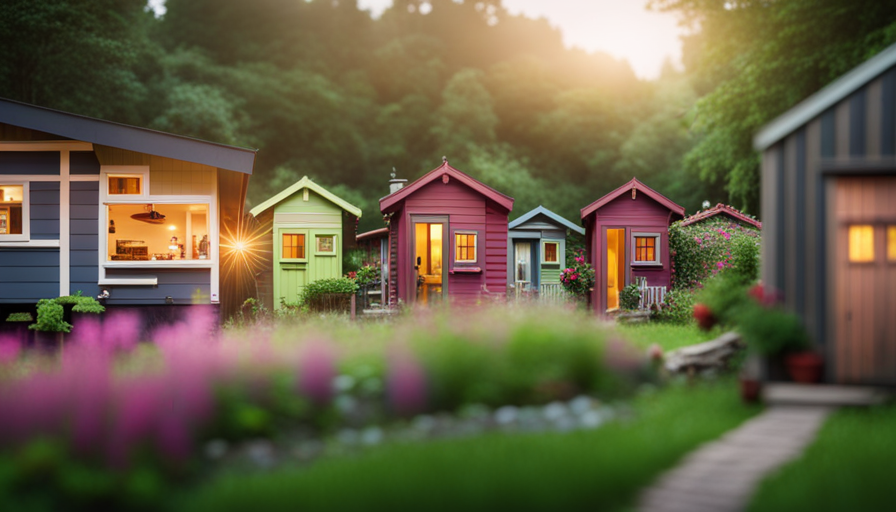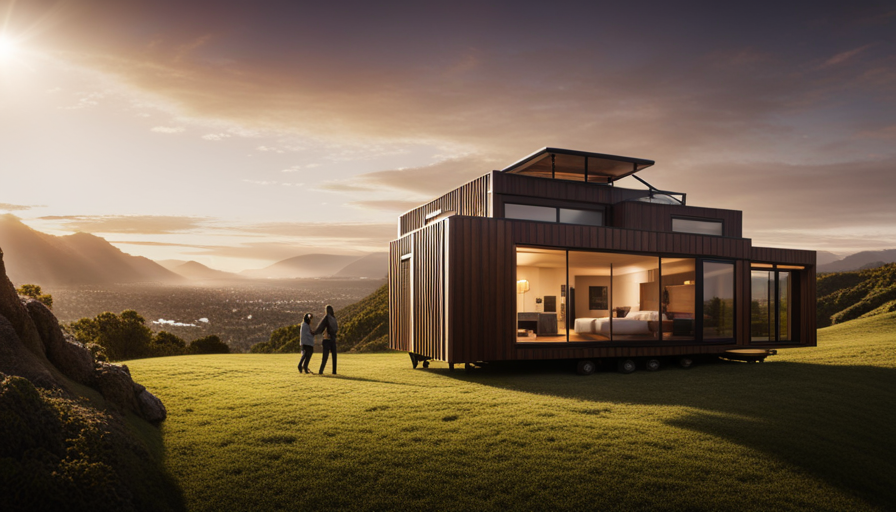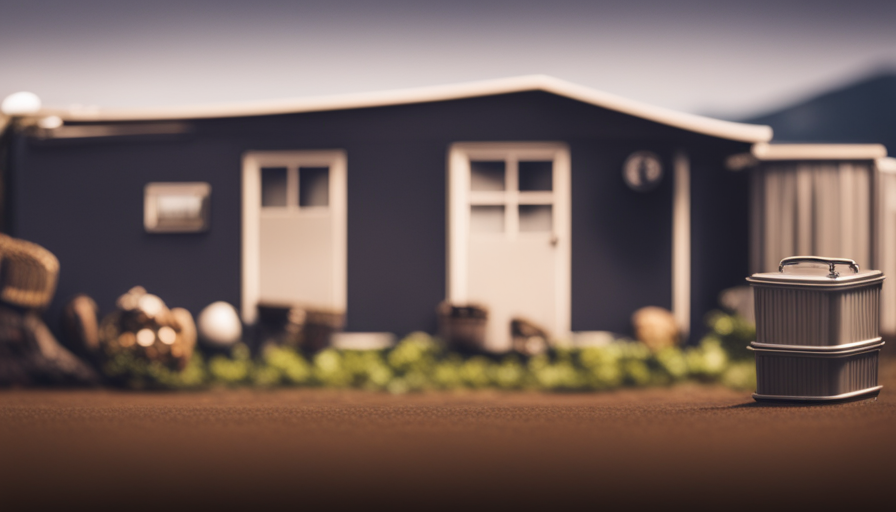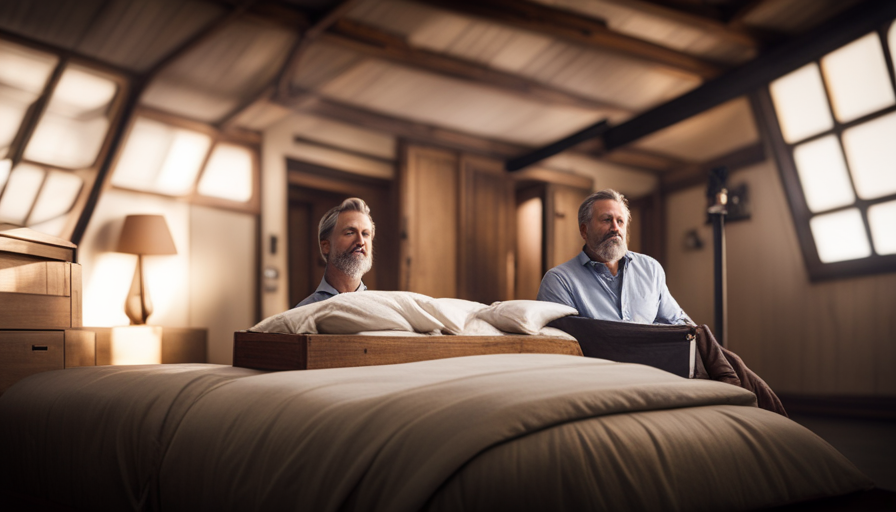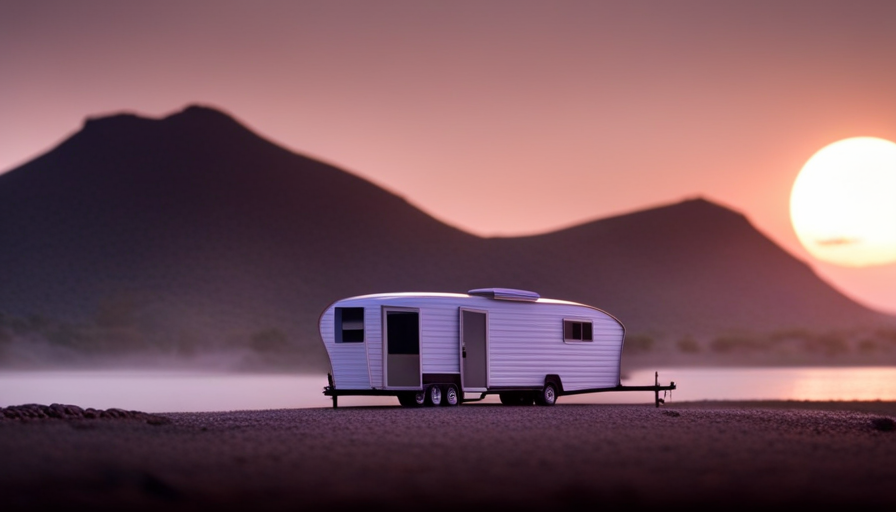Similar to a seed sprouting into a thriving plant, the tiny house industry has experienced substantial growth in recent years. This unique sector, characterized by its compact and sustainable homes, has captured the attention and creativity of homeowners across the country. The tiny house movement has gained momentum, propelled by a variety of factors that have pushed it to the forefront.
From the increasing number of tiny house builders to the growing demand from homeowners seeking a simpler, more sustainable lifestyle, the tiny house business has carved out a significant niche in the housing market. With innovative designs and solutions, the tiny house industry has proven that size is not a limitation when it comes to comfort and functionality. Furthermore, the role of sustainability and eco-friendly practices has played a crucial role in driving the success of this business.
However, government regulations and zoning laws have posed challenges for tiny house enthusiasts. Despite these hurdles, the future outlook for the tiny house business remains promising, with trends pointing towards continued growth and innovation.
Key Takeaways
- The tiny house business has experienced remarkable growth due to increasing demand from homeowners and the appeal of a simpler, more sustainable lifestyle.
- Government regulations and zoning laws pose challenges for tiny house enthusiasts, but despite these obstacles, the future outlook for the tiny house business remains promising.
- Millennials are interested in buying tiny houses, driven by factors such as financial freedom and a desire for a minimalist lifestyle.
- The tiny house market is projected to reach $1.7 billion by 2027, with a compound annual growth rate of 7.9%, indicating significant potential for further growth and success in the industry.
The Rise of the Tiny House Movement
The tiny house movement has been gaining momentum, with more people choosing to downsize and live in homes that are less than 500 square feet. This rise of minimalist living has had a significant impact on the real estate market.
According to a survey conducted by the National Association of Home Builders, 63% of millennials would consider buying a tiny house. This growing interest in smaller living spaces has led to an increase in the number of tiny house builders and vendors, creating a booming business.
One of the main factors contributing to the growth of the tiny house business is the desire for financial freedom. With the rising cost of housing and the burden of mortgage payments, many individuals are seeking alternative housing options that are more affordable. Tiny houses offer a solution to this problem, as they’re significantly cheaper to build and maintain. Additionally, they require less energy to heat and cool, leading to further cost savings.
Furthermore, the rise of the tiny house movement can be attributed to a desire for a simpler and more sustainable lifestyle. Many people are embracing the idea of living with less and reducing their carbon footprint. Tiny houses are often built with eco-friendly materials and incorporate energy-efficient features, making them an attractive option for those seeking a more environmentally conscious way of living.
The factors contributing to the growth of the tiny house business are diverse and multifaceted. From financial considerations to environmental concerns, the rise of the tiny house movement has created a significant shift in the way people perceive and approach housing.
Factors Contributing to the Growth of the Tiny House Business
Imagine yourself in a world where compact and innovative living spaces have skyrocketed in popularity due to several key factors.
The growth of the tiny house business can be attributed to a variety of factors that have contributed to its success. One of the main factors is the increasing desire for a simpler and more sustainable lifestyle. Many people are choosing to downsize and live in tiny houses as a way to reduce their carbon footprint and live a more environmentally friendly life.
Additionally, the rising cost of traditional housing has made tiny houses an attractive alternative for those looking for affordable housing options.
Another factor that has contributed to the growth of the tiny house business is the advancements in technology and design. Innovative solutions such as compact furniture, efficient storage systems, and smart home technology have made tiny houses not only functional but also comfortable and stylish. These advancements have made it possible for people to live comfortably in small spaces without sacrificing their quality of life.
Furthermore, the rise of social media and online platforms has played a significant role in the growth of the tiny house business. Platforms like Instagram and Pinterest have popularized the idea of tiny living and have created a community of enthusiasts who share their experiences and ideas. This exposure has generated a lot of interest and curiosity around tiny houses, leading to an increased demand.
The growth of the tiny house business can be attributed to factors such as the desire for a simpler lifestyle, advancements in technology and design, and the influence of social media. These factors have fueled the popularity of tiny houses and have contributed to their exponential growth.
As the demand for tiny houses continues to increase, we will explore the increasing number of tiny house builders and their impact on the industry.
The Increasing Number of Tiny House Builders
With the growing popularity of compact living spaces, it’s interesting to note that the number of builders specializing in these innovative homes has significantly increased in recent years.
As the tiny house movement gains momentum, more and more individuals are looking to capitalize on this trend by starting their own tiny house building businesses. This has led to increasing competition within the industry, as builders strive to differentiate themselves and attract customers.
One of the key factors driving the growth of the tiny house builder industry is the emphasis on unique designs. Homeowners are increasingly drawn to the idea of living in a space that reflects their individuality and personal style. As a result, builders are constantly pushing the boundaries of design, creating tiny homes that are not only functional but also visually stunning.
This focus on innovation has led to a surge in the number of builders offering custom-built tiny houses tailored to their customers’ specific needs and preferences.
As we transition into the subsequent section about the growing demand from homeowners, it is clear that the increasing number of tiny house builders is a direct response to the rising interest in compact living. Homeowners are seeking out these builders to help them bring their dream of owning a tiny house to life.
Growing Demand from Homeowners
Driven by the desire for a unique and personalized living space, homeowners are flocking to tiny house builders to turn their dreams into reality. The rising popularity of tiny houses is evident in the growing demand from homeowners. People are increasingly drawn to the idea of downsizing and simplifying their lives, while also enjoying the benefits of living in a stylish and affordable home.
One of the main reasons behind the surge in demand for tiny houses is their affordability and cost savings. Traditional houses come with a hefty price tag, making homeownership a distant dream for many. However, tiny houses offer an affordable alternative, allowing people to own their own homes without breaking the bank. Additionally, the reduced size of these homes leads to significant savings in terms of utilities, maintenance, and property taxes.
The affordability of tiny houses, coupled with the rising popularity of minimalist living, has created a booming market for tiny house builders. These builders are witnessing a steady increase in customers who are seeking a simpler and more sustainable lifestyle.
As we delve into the benefits of living in a tiny house, it becomes clear why this trend is gaining momentum.
Benefits of Living in a Tiny House
Are you ready to experience the freedom and simplicity of living in a cozy, personalized space that brings you joy and saves you money? Living in a tiny house offers numerous benefits, making it an attractive option for those seeking a minimalist lifestyle. Let’s explore some of the advantages:
-
Cost savings: One of the most prominent benefits of living in a tiny house is the significant cost savings. With a smaller footprint, tiny houses require less material and energy to build and maintain. Additionally, utility bills are often lower, as the small size and efficient design allow for reduced energy consumption.
-
Minimalist lifestyle: Living in a tiny house encourages a minimalist lifestyle, where you learn to prioritize experiences over possessions. The limited space forces you to declutter and simplify your life, leading to less stress and a greater sense of freedom. Embracing a minimalist mindset can also save you money in the long run, as you become more intentional with your purchases.
-
Environmental impact: Tiny houses have a smaller environmental footprint compared to traditional homes. They consume less energy, produce fewer carbon emissions, and require fewer resources to build. By choosing to live in a tiny house, you can contribute to a more sustainable future.
Transitioning into the challenges and considerations of tiny house living, it’s important to understand the potential obstacles that come with such a unique lifestyle.
Challenges and Considerations of Tiny House Living
Get ready to navigate the potential challenges and considerations that come with embracing the unique lifestyle of living in a cozy and personalized space that brings you joy and saves you money. Living in a tiny house may sound idyllic, but there are some challenges and considerations to keep in mind.
One of the main challenges of tiny house living is space limitations. With limited square footage, you have to be strategic in how you utilize every inch of space. This means downsizing your belongings and adopting a minimalist lifestyle. Additionally, you may have to get creative with storage solutions, such as utilizing vertical space or built-in furniture with hidden storage compartments.
Another consideration is zoning and legal regulations. Not all areas allow for tiny houses to be parked or permanently placed on private property. It’s important to research and understand the local regulations before investing in a tiny house. Additionally, finding suitable land to park or build your tiny house can be a challenge in itself.
Lastly, tiny house living requires a certain level of adaptability and resourcefulness. Living in a small space can be a test of patience and organization skills. It’s important to have a plan for dealing with potential issues like lack of privacy, limited utilities, and maintenance challenges.
While living in a tiny house can be rewarding, it’s important to consider the challenges and potential limitations. By being prepared and taking a proactive approach, you can overcome these hurdles and fully embrace the tiny house lifestyle. So, let’s explore the innovative designs and solutions in the tiny house industry.
Innovative Designs and Solutions in the Tiny House Industry
Imagine stepping into a miniature oasis, where sleek and compact designs seamlessly blend with sustainable living practices in the ever-evolving world of tiny homes. The tiny house industry has been pushing the boundaries of innovation, constantly coming up with new designs and space-saving solutions to maximize functionality in limited square footage.
Here are four noteworthy examples:
-
Multi-purpose furniture: With limited space, innovative designs incorporate furniture that serves multiple functions. From beds that fold into walls to tables that double as storage units, these pieces maximize every inch of space.
-
Lofted sleeping areas: To make the most of vertical space, many tiny homes feature lofted sleeping areas. These elevated spaces not only provide a cozy sleeping nook but also free up valuable floor space for other activities.
-
Sliding walls and partitions: Tiny homes often utilize sliding walls and partitions that can be moved and adjusted according to the needs of the moment. This flexibility allows for a customizable living space that can adapt to different activities throughout the day.
-
Clever storage solutions: Storage is a crucial aspect of tiny house living, and designers have come up with ingenious solutions. From hidden compartments within stairs to built-in storage under seating areas, these clever designs ensure that every nook and cranny is utilized efficiently.
With these innovative designs and space-saving solutions, tiny homes are revolutionizing the way we think about living spaces. Transitioning into the subsequent section about the role of sustainability and eco-friendly practices, it is clear that the tiny house industry isn’t only focused on maximizing space but also on minimizing environmental impact.
The Role of Sustainability and Eco-Friendly Practices
Utilizing renewable energy sources and implementing eco-friendly materials, the tiny house industry embraces sustainability and strives to create harmonious living spaces that leave a minimal carbon footprint. Sustainability practices play a crucial role in the design and construction of tiny houses, ensuring that they’re not only energy-efficient but also environmentally responsible.
One of the key sustainability practices in the tiny house industry is the use of eco-friendly materials. Builders prioritize materials that have a low environmental impact, such as reclaimed wood, recycled metal, and non-toxic paints and finishes. These materials not only reduce waste and pollution but also contribute to healthier indoor air quality.
Furthermore, the tiny house industry promotes energy efficiency through the incorporation of renewable energy sources. Solar panels are commonly installed on the roofs of tiny houses, harnessing the power of the sun to generate electricity. In addition, energy-efficient appliances and systems, such as LED lighting and high-efficiency HVAC units, are utilized to minimize energy consumption.
By adopting these sustainability practices, the tiny house industry isn’t only reducing its carbon footprint but also inspiring individuals to live more sustainably. As the demand for eco-friendly living options continues to grow, it’s important for government regulations and zoning laws to support the development and integration of tiny houses into existing communities, which’ll be explored in the subsequent section on government regulations and zoning laws for tiny houses.
Government Regulations and Zoning Laws for Tiny Houses
To make sure you can legally live in a tiny house, familiarize yourself with government regulations and zoning laws. Government regulations play a crucial role in determining the feasibility of tiny house living. These regulations vary from state to state and even within different municipalities. Some areas have embraced the tiny house movement and have implemented zoning ordinances to accommodate these unique dwellings, while others have stricter restrictions.
Zoning restrictions often pose challenges for tiny house builders and homeowners. Many areas require a minimum square footage for dwellings or restrict the placement of tiny houses on permanent foundations. Additionally, some jurisdictions categorize tiny houses as recreational vehicles, limiting their use to designated RV parks. These regulations can limit the ability to live in a tiny house as a primary residence.
Despite these challenges, the demand for tiny houses continues to grow. Homeowners are drawn to the affordability, sustainability practices, and innovative designs that tiny houses offer. As the popularity of the tiny house movement increases, it is likely that more jurisdictions will adapt their regulations to accommodate this alternative form of housing.
Looking forward, future trends in the tiny house business are expected to focus on further sustainability practices and innovative designs. Builders are incorporating eco-friendly materials and energy-efficient systems to reduce the environmental impact of tiny houses. Additionally, there is a growing interest in modular and expandable tiny house designs, allowing homeowners to adapt their living spaces to changing needs. With ongoing advancements and evolving regulations, the future of the tiny house business looks promising.
Future Outlook and Trends in the Tiny House Business
As we have discussed in the previous section, government regulations and zoning laws play a crucial role in the tiny house business. Now, let’s shift our focus to the future outlook and trends in this booming industry.
The tiny house movement has gained significant momentum in recent years, and its popularity is expected to continue growing. According to market analysis, the global tiny house market is projected to reach a value of $1.7 billion by 2027, with a compound annual growth rate of 7.9%. This indicates a strong demand for these compact and eco-friendly dwellings.
One of the key future trends in the tiny house business is the integration of smart technology. Many tiny house owners are now opting for innovative solutions such as smart home automation systems, energy-efficient appliances, and renewable energy sources. This not only enhances the overall functionality and sustainability of these homes but also aligns them with the broader trend of smart living.
Additionally, there is a growing interest in luxury tiny houses. These high-end, custom-built homes offer all the amenities and comforts of a traditional house, but in a smaller footprint. With an increasing number of people seeking a simpler and more sustainable lifestyle, luxury tiny houses are expected to gain traction in the market.
To better understand the future trends and potential of the tiny house business, let’s take a look at the following table:
| Future Trends | Market Analysis |
|---|---|
| Integration of smart technology | Growing demand for eco-friendly homes |
| Rise of luxury tiny houses | Increasing interest in sustainable living |
| Potential for significant market growth |
By embracing these future trends and catering to the evolving needs of homeowners, the tiny house business is poised for continued success.
Frequently Asked Questions
What are the average costs associated with building a tiny house?
On average, the costs of building a tiny house can vary depending on various factors such as size, location, materials, and finishes. However, according to data, the average costs for constructing a tiny house range from $20,000 to $50,000.
Keep in mind that these figures don’t include land costs or permits. The construction process typically involves careful planning, acquiring materials, and skilled labor to ensure a successful and cost-effective build.
How do tiny houses compare to traditional homes in terms of energy efficiency?
Tiny houses are significantly more energy efficient than traditional homes. Due to their smaller size, they require less energy for heating and cooling. Additionally, many tiny houses are built with energy-efficient materials and appliances, further reducing their environmental impact.
Studies have shown that tiny houses consume up to 80% less energy compared to traditional homes. This makes them an excellent choice for individuals looking to minimize their carbon footprint and save on energy costs.
Are there any financing options available for purchasing or building a tiny house?
There are plenty of financing options available for purchasing or building a tiny house. One popular option is obtaining a tiny house loan. These loans are specifically designed for those looking to finance their tiny house dreams. They typically have lower interest rates and flexible repayment terms.
Additionally, there are also grants and crowdfunding platforms that can help individuals secure the necessary funds. With so many financing options available, owning a tiny house has never been more attainable.
What are some common misconceptions about living in a tiny house?
Living in a tiny house is often associated with several misconceptions. One common misconception is that it’s cramped and uncomfortable, but in reality, tiny houses are designed to maximize space efficiency, with clever storage solutions and innovative designs.
Another misconception is that tiny house living is only suitable for minimalists, but it can actually be adapted to suit various lifestyles.
Despite the challenges, the benefits of living in a tiny house, such as lower costs and reduced environmental footprint, make it an attractive option for many.
How do tiny houses impact the housing market and real estate industry?
Tiny houses have a significant impact on the housing market and real estate industry. They contribute to housing affordability by offering a cheaper alternative to traditional homes. However, their impact is limited due to strict regulations and zoning laws.
Many cities have restrictions on where tiny houses can be placed, making it challenging to find suitable land. These regulations hinder the growth of the tiny house movement and limit its potential to address the housing crisis.
Conclusion
In conclusion, the tiny house business is experiencing significant growth and shows no signs of slowing down.
With an increasing number of builders entering the market and a growing demand from homeowners, the industry is thriving.
The benefits of living in a tiny house, such as reduced costs and a minimalistic lifestyle, are driving this trend. Additionally, innovative designs and sustainable practices are shaping the future of the industry.
Just like a tiny house, this business is small in size but big in impact, revolutionizing the way we think about homeownership.
Hi, I’m Emma. I’m the Editor in Chief of Tiny House 43, a blog all about tiny houses. While tree houses are often associated with childhood, they can be the perfect adult retreat. They offer a cozy space to relax and unwind, surrounded by nature. And since they’re typically built on stilts or raised platforms, they offer stunning views that traditional homes simply can’t match. If you’re looking for a unique and romantic getaway, a tree house tiny house might just be the perfect option.
